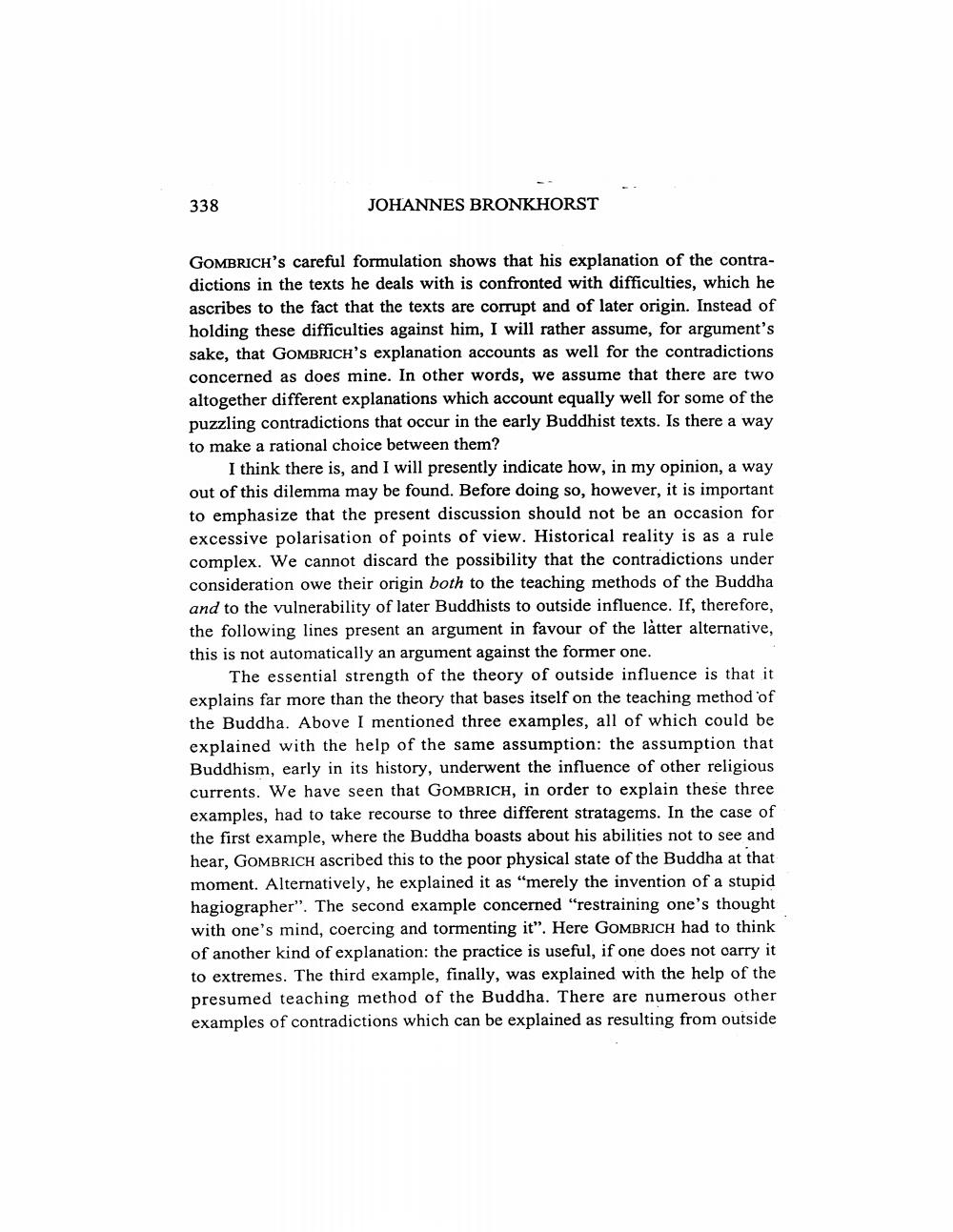Book Title: Buddha And Jainas Reconsidered Author(s): Johannes Bronkhorst Publisher: Johannes Bronkhorst View full book textPage 6
________________ 338 JOHANNES BRONKHORST GOMBRICH's careful formulation shows that his explanation of the contradictions in the texts he deals with is confronted with difficulties, which he ascribes to the fact that the texts are corrupt and of later origin. Instead of holding these difficulties against him, I will rather assume, for argument's sake, that GOMBRICH's explanation accounts as well for the contradictions concerned as does mine. In other words, we assume that there are two altogether different explanations which account equally well for some of the puzzling contradictions that occur in the early Buddhist texts. Is there a way to make a rational choice between them? I think there is, and I will presently indicate how, in my opinion, a way out of this dilemma may be found. Before doing so, however, it is important to emphasize that the present discussion should not be an occasion for excessive polarisation of points of view. Historical reality is as a rule complex. We cannot discard the possibility that the contradictions under consideration owe their origin both to the teaching methods of the Buddha and to the vulnerability of later Buddhists to outside influence. If, therefore, the following lines present an argument in favour of the latter alternative, this is not automatically an argument against the former one. The essential strength of the theory of outside influence is that it explains far more than the theory that bases itself on the teaching method of the Buddha. Above I mentioned three examples, all of which could be explained with the help of the same assumption: the assumption that Buddhism, early in its history, underwent the influence of other religious currents. We have seen that GOMBRICH, in order to explain these three examples, had to take recourse to three different stratagems. In the case of the first example, where the Buddha boasts about his abilities not to see and hear, GOMBRICH ascribed this to the poor physical state of the Buddha at that moment. Alternatively, he explained it as "merely the invention of a stupid hagiographer". The second example concerned "restraining one's thought with one's mind, coercing and tormenting it". Here GOMBRICH had to think of another kind of explanation: the practice is useful, if one does not carry it to extremes. The third example, finally, was explained with the help of the presumed teaching method of the Buddha. There are numerous other examples of contradictions which can be explained as resulting from outsidePage Navigation
1 ... 4 5 6 7 8 9 10 11 12 13 14 15 16 17 18
